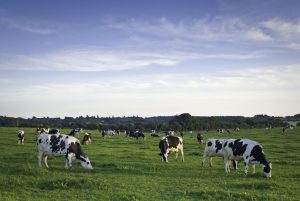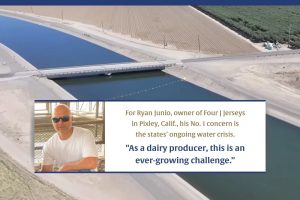
“2022 began with negative numbers for domestic demand (in billing), since the volume of sales decreased, prices grew below inflation, and the purchasing power of wages deteriorated with respect to the milk basket”, said the entity.
In this regard, he exemplified that, during last January, the dairy product sales decreased in volume (-3.3% year-on-year) and also in billing (-6.3%), being “the steepest drop” since last year. “This decrease may be related, in part, to the deterioration in the relationship between the milk basket and the minimum, vital and mobile salary (-7.1% year-on-year). In that sense, by the beginning of 2022, the participation of the milk basket in the salary is 37.5% against the 20.8% average of the last 5 years”.

However, production in the first two months of 2022 was 1.74 million liters, registering a increase of 1.1% year-on-year, and 9.2% compared to the average of the last five years. In this context, although the expectations of the dairy companies, associated with CREA, for the next 4 and 12 months continue to be positive, they expect a lower growth rate than in previous years, given the impact of the weather.
“In this sense, the causes could be the environmental conditions (drought and later flooding) and their impact on the supply of forage resources and individual productions,” the survey indicated.
Increase in inputs and debt
The international and local increase in the values of grains and recent inputs, produced a up 20.1% mom in production costs over the past month. And he worsened the terms of trade for milk. “This context has a negative impact on the planting season of winter greens.”

During March, the Cost Index also had a year-on-year variation of 8.8%, while the Price Index did so by 1.6%. This is how the relationship between both variables was 0.81, being the closest relationship of the last year. In other words, more milk is needed to acquire the inputs. “In this way, the downward trend is accentuated, and the profitability of dairy companies continues to deteriorate”.
Although short-term debts “remained stable” throughout 2021, between 31 and 32 days, a “change in trend” was recorded during March, since the days of indebtedness increased to 35, signifying this “a deterioration in the dairy business”.

“The deterioration in the results begins to be noticed in the financial analysis through the increase in the days of short-term indebtedness,” the study indicated.
In this framework, the report stated that each productive system “must evaluate diet variation strategies to face the increase in costs and the availability of reserves.” Thus, for the moment, the companies in the sector “plan to maintain the composition of the feed in order to preserve the productivity values.”
Good international prices
In it external planeaccording to the CREA survey, there is a good weather for activity. Although Argentine dairy exports began the year with a drop in the volume sold, this scenario was offset by higher quotes.
“For the next few months, the future values of powdered milk decrease, but remain well above historical prices (US$4,300 vs. US$3,000 per ton)”, they exemplified. However, they clarified that “a question arises about the dimension of the impact of the war between Russia and Ukraine in the performance of Argentine exports for the coming months”.

Lastly, the report noted that 2021 closed with a rise of 4.3% year-on-year in volume, and 17.6% in turnover of dairy exports. But, according to provisional data from INDEC, the first two months of this year began with a 3.6% year-on-year reduction in volume, but with an increase of 16.2% year-on-year in billing, as a result of the improvement in world commodity prices.
read also Inflation and food: the field came out at the crossroads of the accusations and compared with Brazil and Uruguay
In this framework, during January 2022, a 29.2% of production abroad. It stands out that Algeria grew in participation by 33% and Russia overtook Brazil18% against 15%, so “we will have to wait how the market reconfigures itself in the face of the war conflict scenario”.

























